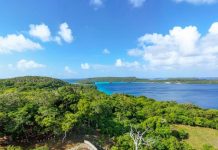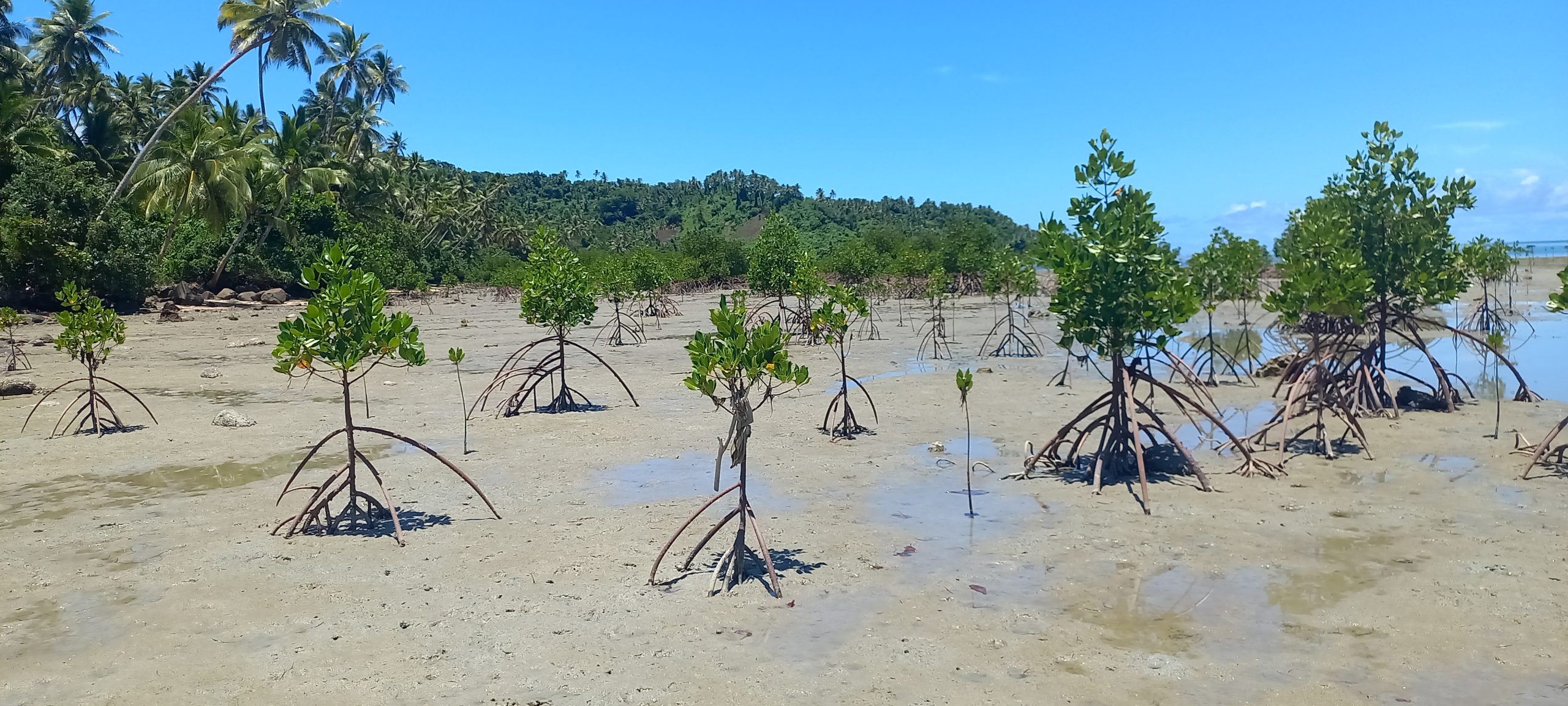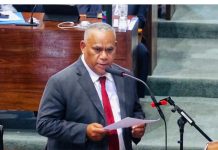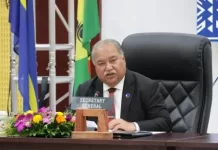In a quiet corner of the world, where the land meets the sea in a delicate embrace, a battle is being fought to save one of nature’s most vital ecosystems.
On 22 May 2024, the International Union for Conservation of Nature (IUCN) released a sobering report, revealing that half of the world’s mangrove forests are at risk of collapse.
This pioneering study, the first to assess a whole ecosystem group globally using the IUCN Red List of Ecosystems, has sent shockwaves through the environmental community. It has classified nearly 20 percent of these crucial coastal habitats as Endangered or Critically Endangered.
Mangroves, with their intricate root systems and lush canopies, are far more than just trees. They are the unsung heroes of our coastlines, providing numerous benefits. They stabilise shorelines, protect communities from severe weather, and store significant amounts of carbon, which helps mitigate climate change.
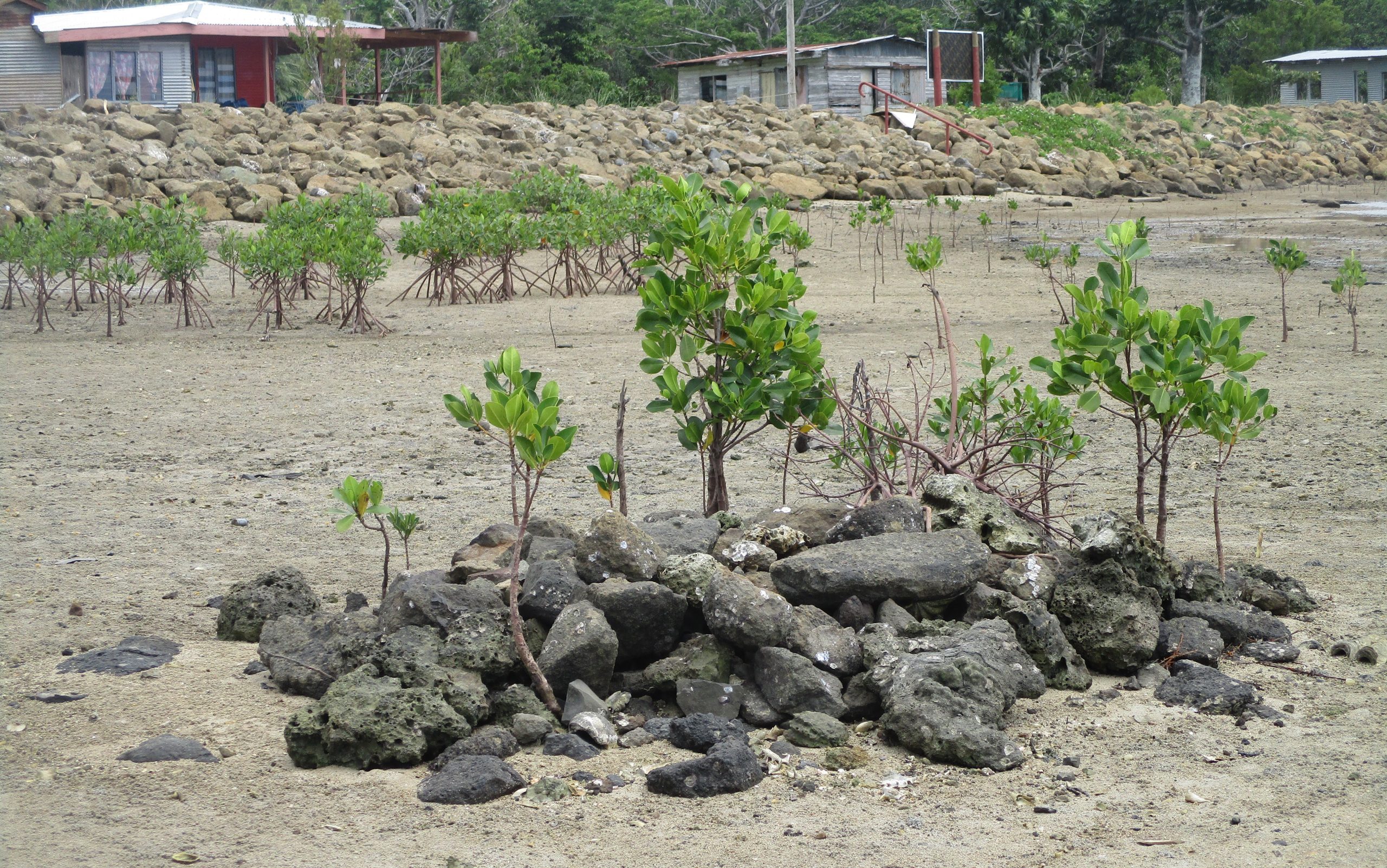
Yet, deforestation, development, pollution, and dam construction, exacerbated by the escalating impacts of climate change such as sea-level rise and more frequent severe storms, pose severe threats to these ecosystems. The IUCN assessment warns that climate change alone threatens one-third of the mangrove ecosystems evaluated.
This comprehensive study involved over 250 experts from 44 countries, examining mangroves in 36 distinct regions. The results are a clarion call for urgent action to prevent further losses. By 2050, without significant intervention, the planet could lose 1.8 billion tonnes of carbon stored in mangroves, a loss valued at $13 billion in voluntary carbon markets.
The societal cost could reach a staggering $336 billion, reflecting the protection mangroves offer against coastal flooding, which shields 2.1 million lives and $36 billion worth of property, and supports 17 million days of fishing effort annually.
In Fiji, where the turquoise waters support lush mangrove forests, the community-driven organisation Community Centred Conservation (C3) Fiji stands as a beacon of hope.
Since 2017, C3 Fiji has championed the conservation of these vital ecosystems. Founded in 2014, the organisation has dedicated itself to protecting the unique biodiversity of the islands while empowering local communities.
“Our focus on mangrove conservation has been driven by the critical need to restore and protect these ecosystems, essential for coastal protection, biodiversity, and community livelihoods,” explains C3 Fiji.
Through a blend of scientific and traditional knowledge, the organisation has integrated grassroots research and training initiatives, making significant strides in mangrove conservation.
“Working closely with communities and witnessing firsthand the extensive benefits mangroves provide, coupled with the threats they face, inspired us to prioritise their conservation to ensure these ecosystems continue to support future generations.
“We engage and educate local communities through awareness campaigns and hands-on training in the local language to ensure understanding. We also work with school children to educate the younger generation about the importance of natural resources and the impacts of climate change.”
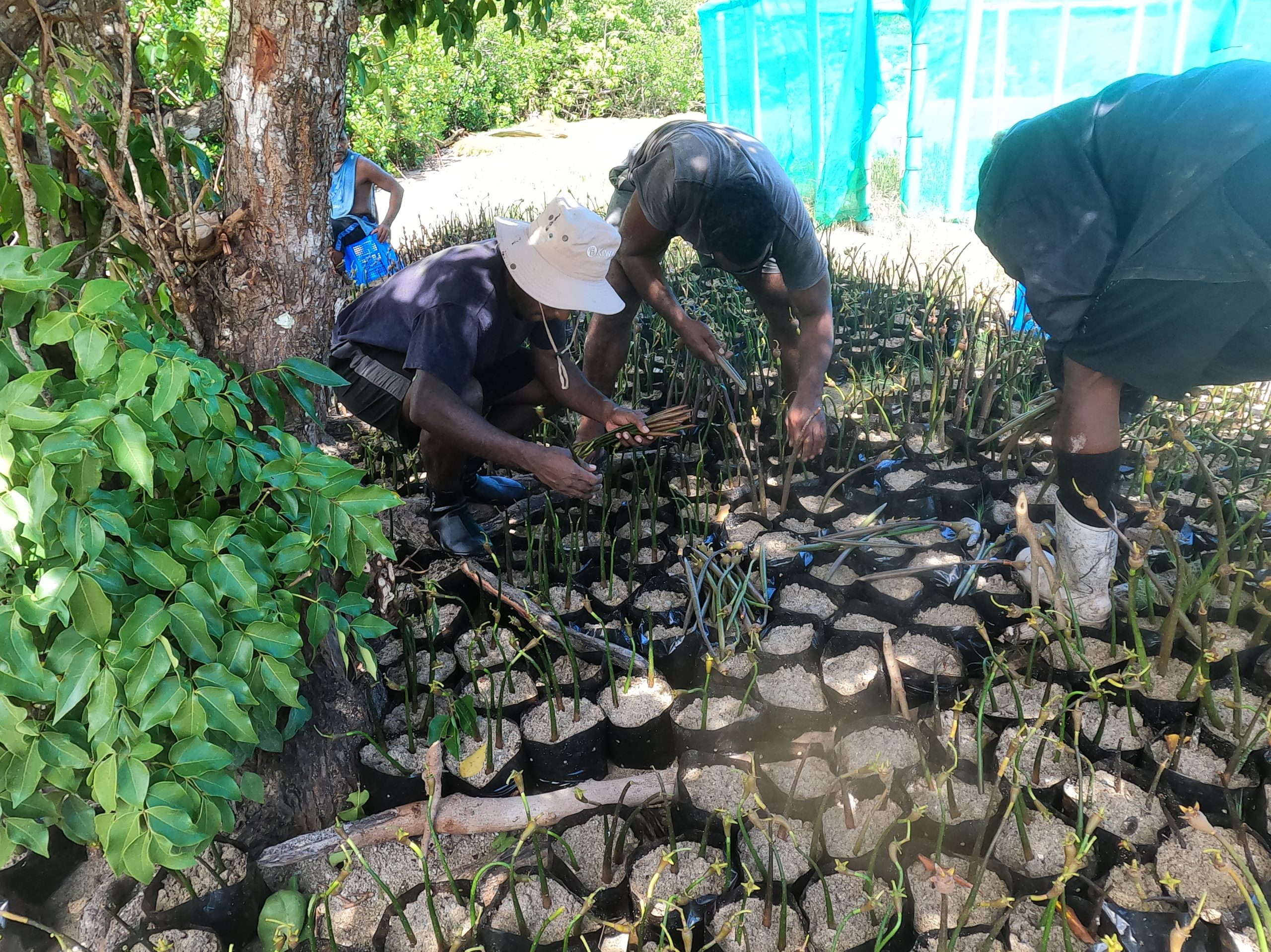
One of C3 Fiji’s notable achievements includes protecting nearly 100 hectares of mangroves in Vanua Levu through community based Locally Managed Marine Areas (LMMA).
Their efforts have also extended to projects like the EU-funded ‘Increasing Climate Change Resilience in Remote Coastal Communities of Macuata and Cakaudrove Provinces’, which involved 15 communities.
“A significant component of this project was the extension of mangroves, co-funded by UNDP and the Pacific Islands Forest Restoration Initiative (PIFRI).
“We planted over 3,000 mangroves, trained 45 fish wardens, and established 8 Marine Protected Areas (MPAs) covering a total of approximately 170 hectares.”
Mangroves are vital to Fiji’s ecosystem and communities. They serve as natural banks for marine biodiversity, providing food and income for local populations. Acting as barriers against strong waves, they protect coastal areas from erosion and storm surges. Additionally, mangroves play a crucial role in mitigating climate change by stabilising coastlines, protecting communities from severe weather events, and storing significant amounts of carbon.
“Mangroves enhance the replenishment of marine species, support commercial endeavors, provide natural protection against climate impacts, and filter terrestrial runoff. They are also significant carbon sinks, helping to mitigate climate change by reducing greenhouse gas concentrations in the atmosphere,” C3 Fiji highlighted.
C3 Fiji’s approach involves extensive community engagement and education.
Comprehensive training programmes cover mangrove ecology, the importance of mangroves, nursery establishment, and proper planting techniques. Community members participate in all project stages, fostering a sense of ownership and stewardship.
“We’ve seen the successful restoration of mangroves in Raviravi Village, with the resurgence of fish and crab stocks. Community capacity has been enhanced, and there’s increased appreciation and involvement in mangrove conservation, particularly among the youth,” shared the organisation.
To enhance their capacity to implement conservation projects and leverage resources effectively, C3 Fiji collaborate extensively with the Provincial Office, various government departments (Youth, Forestry, Fisheries), and other NGOs such as World Wildlife Fund (WWF) and the Red Cross.
C3 Fiji’s work is further strengthened by their rigorous monitoring and evaluation processes.
“We conduct monitoring and evaluation after each project activity, assessing survival rates, the impact of debris, and other challenges using GPS and GIS technology. This involves replacing dead saplings and continuous monitoring even after project completion to ensure the long-term success of our conservation efforts.”
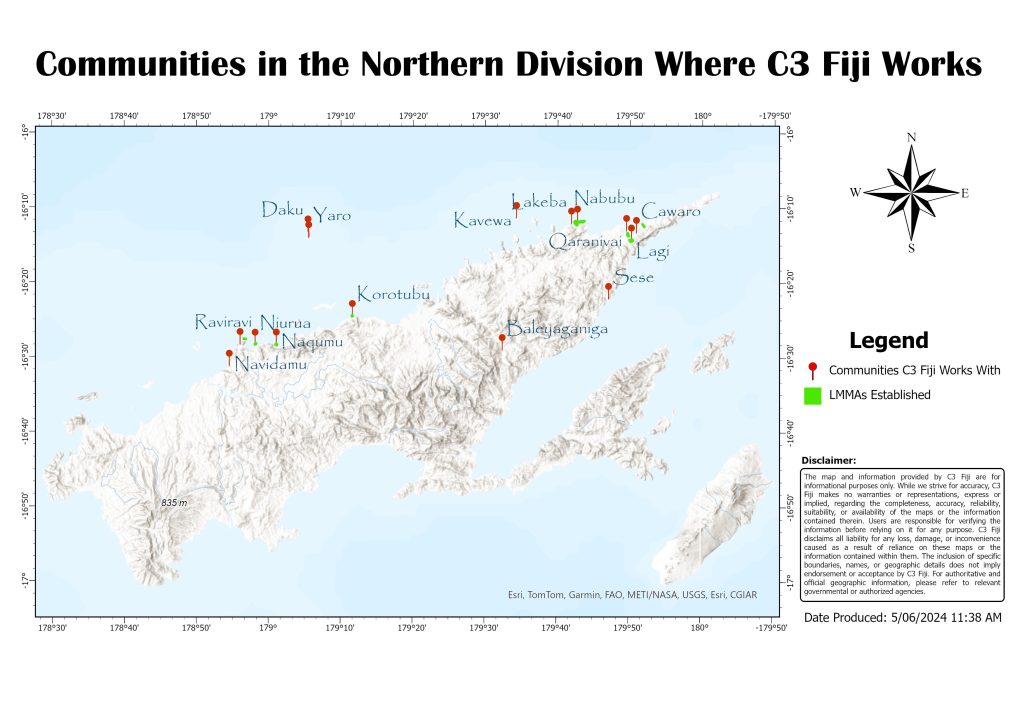
Starting this month, they will begin using drones coupled with remote sensing technologies and satellite imagery to monitor their conservation projects.
Despite their successes, C3 Fiji faces several challenges, including parasitic barnacles hindering propagule growth, intense wave action uprooting young saplings, poor waste management, and human-induced damage such as cutting or uprooting of young mangroves.
“Over the years, mangrove restoration programmes have faced challenges such as re-establishing mangroves lost due to anthropogenic activities that are harvesting for firewood and natural disasters like cyclones,” C3 Fiji Programmes Officer, Maleli Qera.
To address these issues, C3 Fiji collaborates with local authorities and community organisations, advocating for proper consultations and project withdrawals when necessary.
“In one community, we successfully halted a sand extraction project that threatened a mangrove area by working with the Provincial Office and the Qoliqoli Cokovata Management Committee (QCMC) to conduct proper consultations and advocate for the project’s withdrawal.”
Looking ahead, C3 Fiji aims to significantly increase mangrove cover, enhance marine stock replenishment, establish and maintain LMMAs, and promote community ownership and empowerment. Through education, research, and strengthened partnerships, they hope to ensure the long-term ecological, economic, and social sustainability of Fiji’s mangrove ecosystems.
The recent study’s findings on mangroves will guide future national assessments and actions, helping stakeholders identify the most pressing threats in their regions and select effective restoration strategies.
As the IUCN’s findings resonate globally, the efforts of C3 Fiji offer a glimmer of hope. Their work underscores the vital importance of local action in global conservation efforts, demonstrating that with community involvement and strategic intervention, the future of the world’s endangered mangroves can still be secured.




